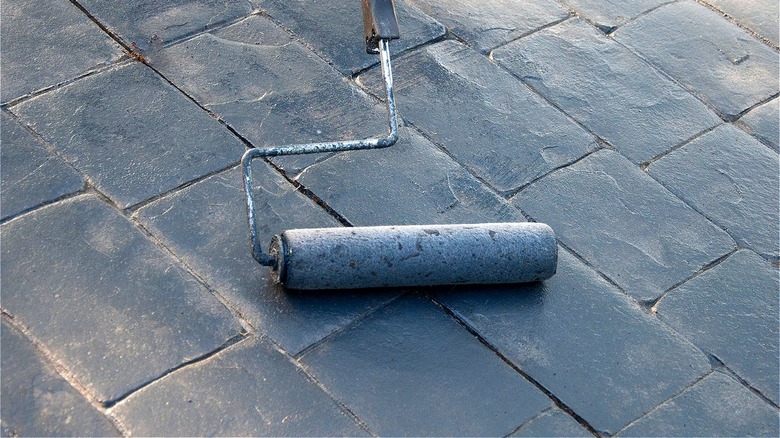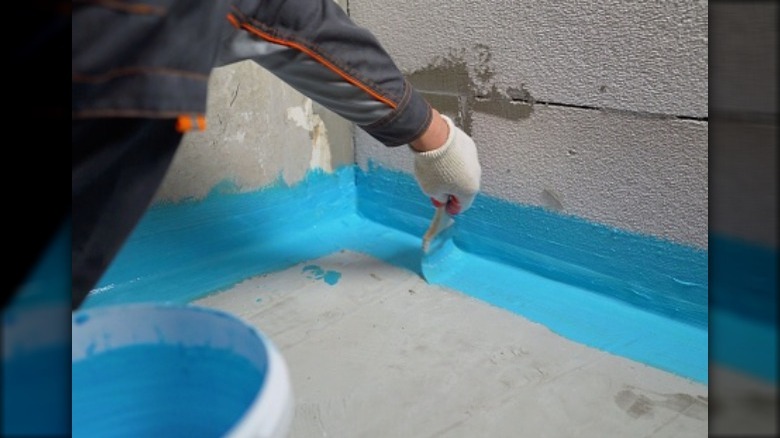The Best Method For Painting Cinder Blocks
Whether you want to finish your basement walls or are intrigued by the idea of styling a garden bench, the project could very well involve painting cinder blocks. That means knowing what products and tools to use, and, of course, what the best method is for this particular job. But don't get ahead of yourself! First, you need to pick your paint.
If the cinder blocks you have an eye on are outside, then you need to prime them first so the paint stays on more effectively before using a filler and then a common exterior paint. The same pretty much goes for the inside of a building with interior paint, as well as acrylic, latex, masonry, and other types of paints suited for relatively enclosed, protected spaces. You might be surprised to find out that some kinds of spray paint also work well on cinder blocks, which means they're ideal for your DIY endeavors. If you're unsure of which one you require, then take a peek at the product's can to see if it says it's meant to be used on cinder or concrete.
Now that you have exactly what you need, it's time to move on to prepping and painting your cinder blocks.
Painting cinder block walls requires a few steps
You may find yourself facing boring cinder block walls every time you step down into your basement or another unfinished room in your home. Fortunately, for those who prefer their living space to reflect their stylish tastes, you can snazzy up cinder blocks with paint. To do so, you just need the paint you've already chosen as well as cement to patch up any cracks or holes, a paintbrush, 1/2-inch to 3/4-inch paint rollers, a wire brush or painter's tool, a tarp, and a stool or ladder if needed. You should also grab a face mask and goggles for safety.
After putting on your protective gear and putting down the tarp to keep things tidy, prep the cinder blocks by getting rid of any dust, dirt, and old paint. This is where the painter's tool or wire brush will come in handy. Next, fill any gaps in the wall with cement before letting it dry and giving the blocks another wash.
Now, go ahead and paint. First, frame both the inside and exterior sides of each cinder block with paint before going back and filling in the middle area with a roller. If you see any spots you missed, use the paintbrush to pop a little color directly on the area. Give the paint time to dry before adding a second coat, if needed. If this seems totally doable, then you might also want to give spray-painting cinder blocks a try/
You can spray-paint individual cinder blocks
Cinder blocks can be used for much more than just walls. They can also be put to good use as the base of or an addition to a bed frame, desk, or bookshelf, not to mention a backyard table, raised garden bed, or fire pit. To add your own personal touch, you may want to pop some paint onto your cinder blocks. For this DIY, follow the same prepping method as above, however, stop before you're about to apply the paint. Instead of using the same product that you might apply to the walls in your basement, you might want to opt for spray paint.
Make sure you've selected a paint that can be used both inside and outside, as well as one that works on a cement-like material. You might also want a product that both primes and paints. Since the cinder blocks might absorb some of the color when first applied, you'll likely need to go over the surface more than once. Just ensure the blocks dry fully in between coats. You also want to make sure they're completely dry before you use them in whatever surely amazing project you have in mind.


